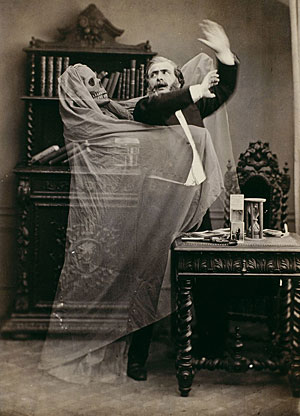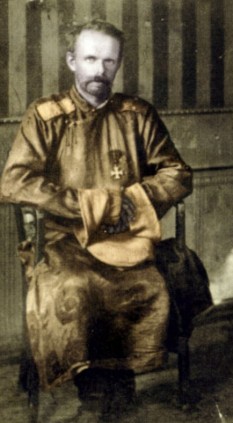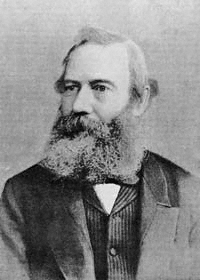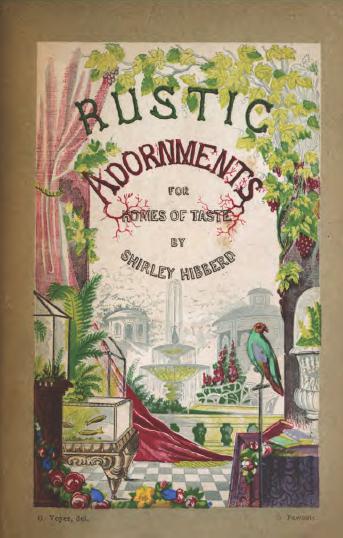The other day I popped in to the Town Hall to find out a bit about bins, park benches, signage, flowerbeds and civic statuary. I think it is time to engage more fully with the maintenance of my bailiwick and the municipal doings therein. This impulse was prompted when, sitting on a park bench next to a civic statue of the much-missed Alderman Spandau, alongside which was a bin in which weeds hoed from a flowerbed had been chucked, I read a sign, placed there by the council, which implored me, and, I suppose, anybody else who read it, to refrain from smoking within the precincts of the park, to tidy up after my dog, though I did not have a dog as such, to ensure I paid my council tax promptly, and to place any litter I wished to discard in the bin provided. Each of these instructions, or pieces of advice, or commands, or whatever we might call them, was translated into several languages. It was a bloody big piece of signage. Incidentally, for those of you attuned to the resonances of the colour spectrum, the bench was brown, the statue was grey with patches of green, the bin was black, and the weeds were, weirdly, gash gold-vermilion. I wouldn’t have put them in the bin, I’d have taken them home and arranged them in a vase and placed it on my mantelpiece, if I had a mantelpiece. The sign itself was beige, with the writing in red. If I had to be more precise, I would say it was blood red. I did not at the time understand why this might be significant.
If I had either a dog or a mantelpiece, I might not have been so quick to visit the Town Hall. Both would have claims on my attention. I would have to take the dog for walkies, and shop for biscuits, and give it baths, and possibly take it to the vet for injections from time to time. As for a mantelpiece, that would need dusting, I suppose, and minor upkeep, such as the patching up of crumbly bits, if it was rotting, and also much time spent in judicious contemplation of items to display upon it, and the arrangement thereof. Those too would have to be dusted, in addition to the mantelpiece itself, if I were to avoid becoming engulfed by dust and thus have trouble with my breathing apparatus, one day. But unencumbered as I was by both dog and mantelpiece, when I hurled myself out of bed that morning, I was free to go along to the Town Hall without other duties to distract me.
I know nothing of architecture, but by God I recognise municipal pride expressed in brick and concrete when I see it. I must have walked past the Town Hall numberless times without paying it any attention. Now, I stopped on the steps to take in its majestic frontage. Gosh. Feeling somewhat belittled, I entered through the grand doorway. I did not have an appointment with anybody, so when I presented myself at the reception desk I was treated with a certain disdain. Perhaps I was mistaken for a mendicant. I suppose I ought to have washed my hair and worn a less grubby cravat for what I considered a pretty momentous visit. I was pointed towards a row of plastic chairs and told to sit and wait. Before taking my seat, I browsed through a rack of leaflets affixed to the wall, and took a few of them to pass the time.
Coincidentally, the very first one I read concerned Alderman Spandau, whose statue I had sat beside in the park. I learned that his title of Alderman had no civic significance, but that he had been so called because he was an expert, albeit an amateur one, on the subject of alder trees, with which the park was riddled. I learned too that an enthusiasm for trees ran in the family, and that he had a cousin, who also bore the name of a German prison, who was known as Sycamoreman. Fascinating as all this was, it had nothing to tell me of bins and park benches and signage and flowerbeds, or of civic statuary in general, so I tucked the leaflet into an inner pocket for safekeeping, and turned my attention to the next one in my clutch. It was all about food poisoning. Again, not my immediate concern, though I noted it managed to work in a mention of Alderman Spandau, claiming his death had been due to the unwise ingestion of several contaminated eggs on toast. There was no reference to his cousin, although yet another German prison was alluded to, for reasons which I could not quite pin down. I replaced this leaflet in the rack. As I was doing so, a council person emerged from behind a panel and approached me, his hand held out in greeting.
Seldom have I beheld such glistening buttons!
This council person gave off a powerful reek of spam and hair oil, but I was impressed by his politesse. As he led me up staircases and along corridors towards his office, he explained that, following a rash of complaints about surliness and the grumps, the municipal authorities had trained their entire workforce in the manners and mores of the imperial court of Austria-Hungary circa 1844. This had worked wonders in what he nevertheless termed the “public interface skillset”. I couldn’t help thinking what Alderman Spandau would have made of it all, but then I remembered that he was merely a tree enthusiast rather than a civic dignitary.
I have not looked into the matter, but I assume that the word dignitary comes from the same root as dignity. This was a quality singularly lacking, I am afraid to say, among the members of the current council administration, a framed photograph of whom was prominently displayed on the wall of the office into which I was led. They were pictured together in a field, lined up as if they were a sports team, and each had a glassy-eyed stare. Each wore an unfortunate kagoul. I noticed there was a dog – mercifully unkagouled – in the front row, and asked, joshingly, if it, too, was a councillor, or just a mascot. To my surprise, the council person replied that the dog, Skippy by name, was actually the Mayor of our bailiwick. It had won more votes than all the other councillors put together.
“The rest of them are a complete shower,” he said, brightly, “but needs must when the devil drives.”
I observed that, Skippy apart, they all looked as if they had had their brains removed.
“Let us say… modified,” he replied.
Intriguing as this revelation was, I did not want to waste time talking about the councillors. I put it to the council person that I was ready and willing to contribute, manfully and with gusto, to all matters pertaining to bins and park benches and signage and flowerbeds and civic statuary, but that before I could do so I needed to know more about them all. He made a great show of buffing his buttons with a silken kerchief, and said:
“Oh, I wouldn’t worry your little potato-shaped head about such things. Skippy has everything under control.”
Though reassured in terms of the maintenance of civic order, I was somewhat deflated. Was there no way, I protested, that I could play the part of an active citizen? I passed over the comment about the shape of my head, for I did not think it had been meant unkindly, and, after all, my head is on the small side, and it resembles a potato. This is often remarked upon by people, but usually at times when conversation has fallen flat and they are desperately trying to think of something to say. The council person had no such problem. Indeed, he began babbling a stream of what I took to be boilerplate municipal jargon. It was unremittingly opaque, and he must have noticed my eyes glazing over, for suddenly he grabbed me by the elbow and ushered me towards the window.
“There!”, he shouted, pointing, “That is what I’m talking about! The municipal monkey pound!”
I looked, and sure enough, just past the car park and a clump of alder trees, there was a pound, and it was full of monkeys. At ground level you would never have recognised it, but from a high window up here in the civic empyrean there was no mistaking it. I was rapt.
“Explain it to me again, this time without the jargon,” I said.
This, it seemed, was too much to ask. He insisted I would get the hang of things, plopped a cap on my head and pinned a badge to my lapel. Five minutes later, we were outside, at the electronic gate of the monkey pound, and he was pressing a buzzer.
“Ah, Chevenix!” he said, as a civic functionary emerged from a hut to open the gate, “Here is our new volunteer.”
And I was in. I was doing my bit for the council. Not as I had hoped to, in the realm of bins and park benches and signage and flowerbeds and civic statuary, but nonetheless I had my foot in the door. I was an active, civically-minded citizen.
Chevenix, the monkey pound supervisor, proved to be the most unfailingly helpful person I have ever met, in any capacity. He gave me a brush to rid my volunteer’s cap of accumulated filth, and a rag to polish my volunteer’s badge, and he took me on a guided tour of the monkey pound, and told me more about it than any sane person could wish to know.
Quite unbeknown to me, our bailiwick had been plagued for some years by monkeys, and not just any monkeys, but monkey vampires. These were qualitatively different from vampire monkeys, I was given to understand, but I am hazy on the details, and Chevenix soon passed on to other matters. The monkey vampires had all been rounded up, from their nests and hiding places in ginnels and air-vents and pavilions, and were impounded here in the pound behind the car park and the clump of alder trees pending a decision on whether or not they should be subject to extraordinary rendition. Skippy was mulling it over, but it was low on his list of priorities. Some of those in the know wanted all the monkey vampires to be put in a sealed train, like Lenin, and taken to the Carpathians. Others preferred the idea of ferrying the monkey vampires, one by one, to havens. There was even a body of opinion suggesting they be kept in the municipal monkey pound in perpetuity. Chevenix did not divulge to me which, if any, of these options had his backing. I supposed that, as a functionary, he had to remain neutral.
The monkey vampires themselves were fascinating, at least when visible. The pound was constructed with many tromple l’oeil gardenia bushes, mazes, baffles and cubbies, and it was possible to walk round and round for hours without seeing a single “customer”, as the council insisted on calling the impounded monkey vampires. Some, I was told, were velveteen, and thrashed about in the darkness. Others threw pickle jars over the fence. When the moon was full, there was keening. The smell was a mixture of gnats’ blood and marzipan and bilgewater. Crocuses, real ones, grew in patches here and there, and sometimes very tiny, almost transparent, monkey vampires could be seen sucking moisture from the buds. Chevenix had a sack stuffed with aerosol sprays which he made judicious use of. Several of the monkey vampires had learned to count, and were reportedly devising their own calendar. It had been noticed that no birds ever flew over the pound with the exception of startled chaffinches. On a log, a pot of paint with a much-dented lid acted as a lure. One of my fellow-volunteers, a bedraggled harpy of advancing years, was in charge of brazil nuts.
I hope to be given my own little sphere of influence one day. I have not been home since I got here. I sleep in a hammock in the corner of one of the mazes, and do my ablutions in the paddling pool. I feed on brazil nuts left unattended by the harpy, and suck moisture from crocuses.
One thing Chevenix did not tell me was that the municipal monkey pound was built on the site of a paupers’ graveyard. I discovered this for myself, by a combination of sharp wits and cemetery erudition. I have noticed unseemly traffic between the monkey vampires and the spirits of long-dead paupers. It is going on all the time, at a lopsided angle to common perception. My quandary is whether to tell Chevenix, or the council person, or even Skippy the mayor, what I know.





